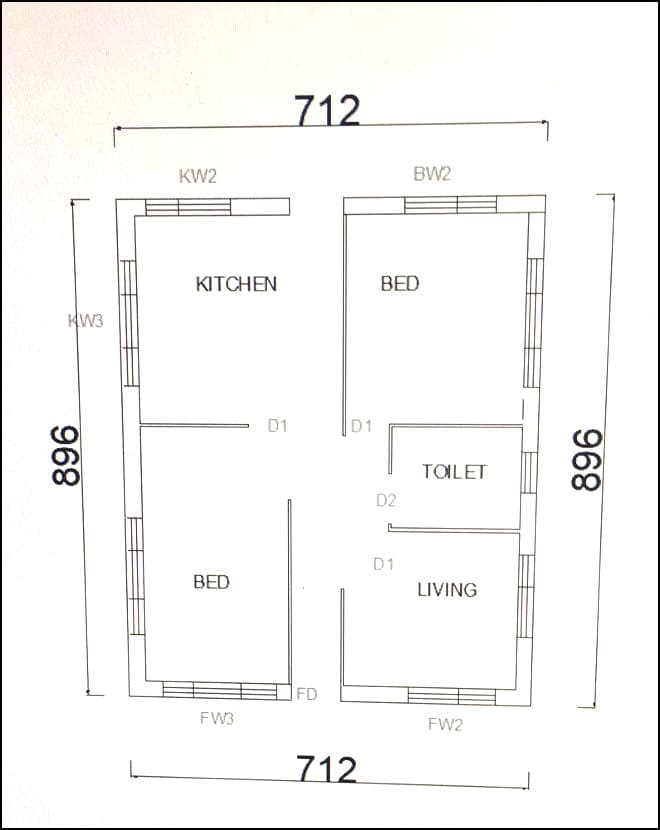Prasoon Sugathan, a native of Arpookara in Kottayam, Kerala, built his house in eye-catching green hue, to prove that a comfortable house, with all facilities, could be built easily without burning a hole in the pocket. Being a vastu consultant, it was his countless experiences and realizations, which inspired him to construct a house like this.
“A majority of people build houses which cost much beyond their financial capabilities. Some others may invest their lives’ entire savings in building a house. They would then struggle to meet their daily expenses. Those who avail huge loans would be helpless until they repay it. So, even though they live in big houses, they hardly enjoy any peace of mind. This severely affects their health as well. People mistake it for the ill effects of vastu,” explains Prasoon.
He was determined to prove that environment friendly houses, in meager budget, could be actually made. The construction of the house was completed within 25 days, on a budget of Rs 4.65 lakh.

Inverted house

Contrary to conventional methods of construction, the roof of the house was built first. The walls were built after that and finally finishing off with the floor. The ground floor which has an area of 640 sq ft has living and dining spaces, two bedrooms, one bathroom and a kitchen. The 460 sq ft upper storey has a spacious hall and a balcony as well. This is an excellent party space where Prasoon’s friends love to gather.
“I love to describe this house, named Vasthaveeyam, as a breathing abode. Though the house is small, it is built by strictly following the vastu rules. These rules were diligently followed while determining the directions and measurements. I plan to turn this house into my office as well,” says Prasoon.

The stages of construction:

» Five ditches were taken on both sides and GI pipes were inserted. These pipes were secured with concrete mixture. The pipes are installed about five feet above the ground level.
» GI square pipes are installed on top of these.
» GI frames in triangular shape were attached over it.
» GI truss fold sheets were placed on the frame.
» The spaces in the interiors were separated with fibre cement boards.
The front and the back walls are constructed using regular bricks. So there aren’t any security risks. Gypsum false ceiling is done below the metal sheet, which helps regulate the temperature inside the house. The rooms and spaces are separated using fiber cement boards. The flooring in the first storey is done using V board panels.
This house can effectively overcome the natural calamities. Even if it collapses, the debris really aren’t life threatening. This removable house can be shifted to a different place as well. The spaces in the interiors can also be re-arranged as the fiber cement boards, separating them, are removable.
These are the factors which lowered the expenses:

» As the house is built in a triangular shape, utility space is available even though the truss roof isn’t installed.
» Alternative building materials are used. The use of concrete was limited.
» Old wood were reused to make the doors and windows.
» The wiring and plumbing jobs are done outside the walls.
» Less number of laborers was hired to complete the construction in a limited period of time.
These are the materials which were used to build the house:
Roof – GI truss fold sheet, gypsum
Upper storey and interior walls – fiber cement boards
Exterior walls – red bricks
Structure – GI pipe, concrete
Project facts
Location – Pambooranpara, Kottayam
Area – 1100 sq ft
Plot – 5 cents
Owner and designer – Prasoon Sugathan
Mob - 9946419596















